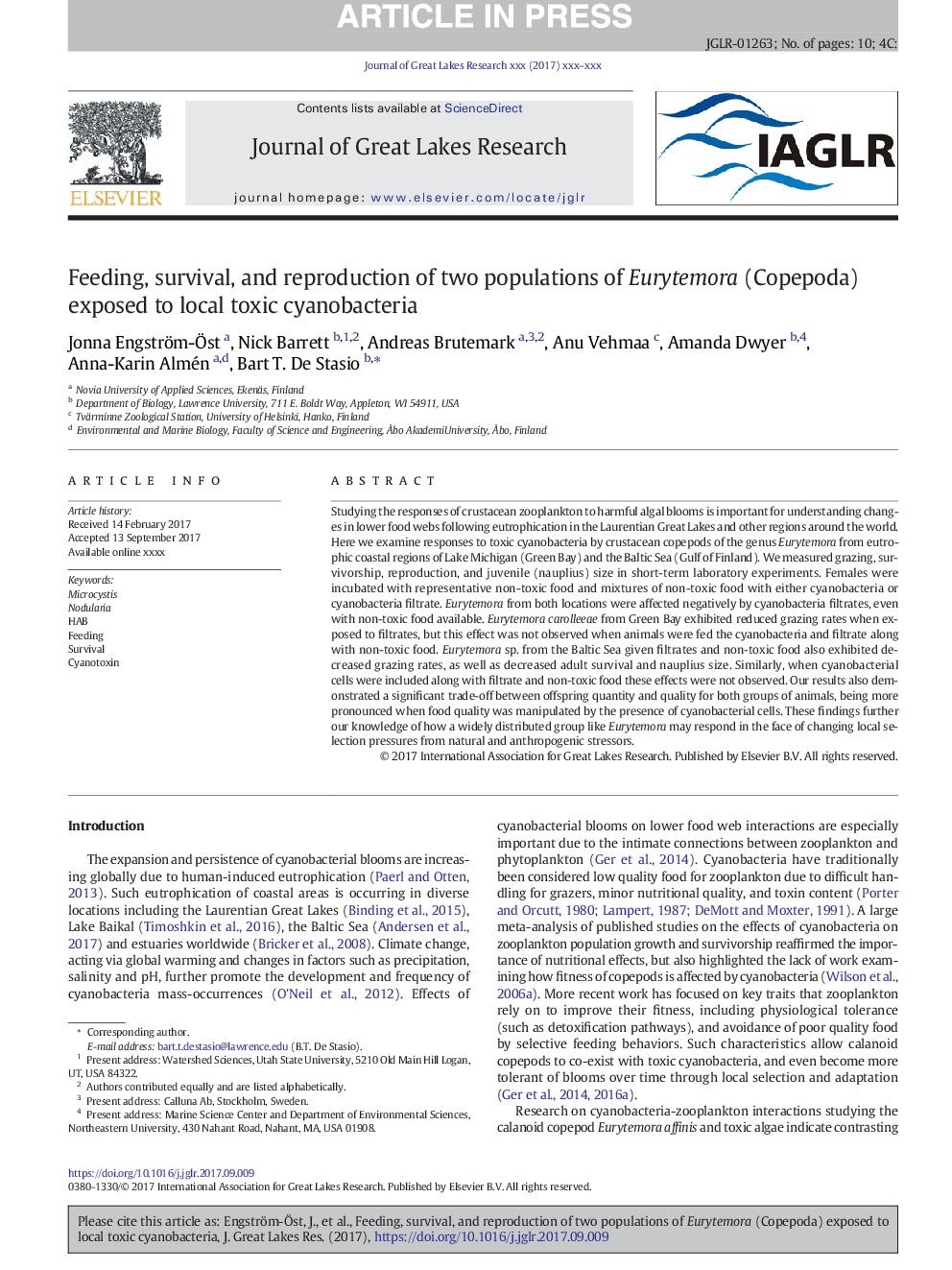| Article ID | Journal | Published Year | Pages | File Type |
|---|---|---|---|---|
| 8849193 | Journal of Great Lakes Research | 2017 | 10 Pages |
Abstract
Studying the responses of crustacean zooplankton to harmful algal blooms is important for understanding changes in lower food webs following eutrophication in the Laurentian Great Lakes and other regions around the world. Here we examine responses to toxic cyanobacteria by crustacean copepods of the genus Eurytemora from eutrophic coastal regions of Lake Michigan (Green Bay) and the Baltic Sea (Gulf of Finland). We measured grazing, survivorship, reproduction, and juvenile (nauplius) size in short-term laboratory experiments. Females were incubated with representative non-toxic food and mixtures of non-toxic food with either cyanobacteria or cyanobacteria filtrate. Eurytemora from both locations were affected negatively by cyanobacteria filtrates, even with non-toxic food available. Eurytemora carolleeae from Green Bay exhibited reduced grazing rates when exposed to filtrates, but this effect was not observed when animals were fed the cyanobacteria and filtrate along with non-toxic food. Eurytemora sp. from the Baltic Sea given filtrates and non-toxic food also exhibited decreased grazing rates, as well as decreased adult survival and nauplius size. Similarly, when cyanobacterial cells were included along with filtrate and non-toxic food these effects were not observed. Our results also demonstrated a significant trade-off between offspring quantity and quality for both groups of animals, being more pronounced when food quality was manipulated by the presence of cyanobacterial cells. These findings further our knowledge of how a widely distributed group like Eurytemora may respond in the face of changing local selection pressures from natural and anthropogenic stressors.
Related Topics
Physical Sciences and Engineering
Earth and Planetary Sciences
Earth and Planetary Sciences (General)
Authors
Jonna Engström-Ãst, Nick Barrett, Andreas Brutemark, Anu Vehmaa, Amanda Dwyer, Anna-Karin Almén, Bart T. De Stasio,
